The benefits of a diverse and inclusive team are clear, both in terms of financial success and talent attraction. Embracing an inclusive environment where work is accessible and respectful of a range of human experiences benefits us all.
To achieve this goal, we must continue to build our understanding of diversity and have a clear strategy to remove bias and embed inclusive practices throughout the Talent Lifecycle.
A fresh focus on Diversity & Inclusion
What are Diversity & Inclusion?
Benefits of a healthy D&I balance
Diversity and inclusion: an ongoing focus for businesses?
Are businesses meeting D&I targets?
Top diversity and inclusion challenges facing companies in 2024
How to improve D&I in your business
10 ways to embed diversity & inclusion
Diversity and inclusion remains a real business challenge. The benefits of a diverse and inclusive team are clear, both in terms of financial success and talent attraction. Diverse organisations are driven by motivated and engaged people who bring a broad range of talents and perspectives to drive innovation. Strong diversity credentials also elevate businesses as employers of choice across the workforce, enabling recruiters to unlock untapped and overlooked talent. The question is how we bridge this gap to create a fairer working environment and unlock these benefits.
Progress is being made, but the pace of change is slow. To take one example, the World Economic Forum estimates that at the current rate, it will take another 132 years to close the global economic gender gap.
We published our first version of this guide in 2020, and the landscape has changed even in this short time. Our understanding of diversity is evolving, as is the challenge for employers.
Increasing awareness and diagnosis of conditions like ADHD has raised the visibility of neurodiversity. A more nuanced understanding of gender identity is allowing people to express their identity more freely in the workplace. Meanwhile, campaigns to improve support for those experiencing menopause and severe menstrual symptoms have led to a new look at how we can better support women’s health in the workplace.
Alongside this is a greater awareness of intersectionality and a recognition that none of us fit neatly into one box. In pursuing an inclusive and diverse working world, we must continue to be conscious of how traversing multiple social identities can change an individual’s experience.
The modern work environment can no longer be designed around a single perspective if it is to be truly effective. Embracing an inclusive environment where work is accessible and respectful of a range of human experiences benefits us all. To do this, we must continue to build our understanding of diversity and have a clear strategy to remove bias and embed inclusive practices throughout the talent lifecycle.
We partner with our clients to support them in improving diversity and ensuring equality. This includes uncovering insights about best practice, benchmarking D&I performance against competitors and mapping the market to find diverse talent pools for now and the future.
Diversity is any characteristic that can be used to differentiate groups and people from one another. In a nutshell, it’s about empowering people by respecting and appreciating what makes them different.
The Equality Act 2010 lists ‘protected characteristics’ in UK law. These are age, disability, gender reassignment, marriage and civil partnership, pregnancy and maternity, race, religion or belief, sex and sexual orientation.
Source: Global Diversity Practice
Inclusion is an organisational effort and
practice in which different groups or
individuals from different backgrounds are culturally and socially accepted, welcomed, and equally treated. These differences could be self-evident, such as national origin, age, race and ethnicity, religion/belief, gender, marital status and socioeconomic status or they could be more inherent, such as educational background, training, sector experience, organisational tenure, even personality, such as introverts and extroverts.
An inclusive workplace culture is one in which everyone feels that they belong through feeling safe in being themselves, that their contribution matters, policies and practices are a fair and diverse range of people are supported to work together effectively.
Businesses must focus on both areas to achieve success. Figures from McKinsey show that improvements in diversity do not necessarily lead to an improvement in inclusion. Their analysis of sentiment in Glassdoor and Indeed user reviews showed a discrepancy in perceptions:
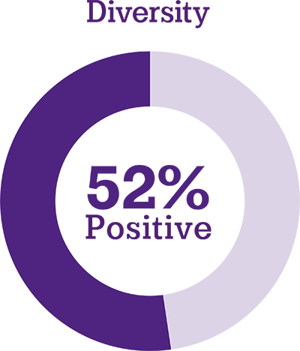
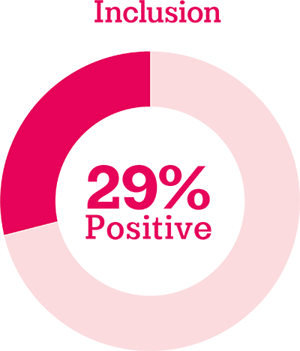
It’s clear that companies need to ensure that their focus covers both diversity and inclusion. Initiatives must cover a wider remit than just attracting a diverse range of candidates.
Incorporating an inclusive company culture and employee experience will help ensure staff have a positive experience, and the business can likewise benefit.
Want to read this offline or share with a colleague? Simply fill in some details to download a copy.
Companies who have a more diverse and inclusion workforce are seeing benefits across the board:
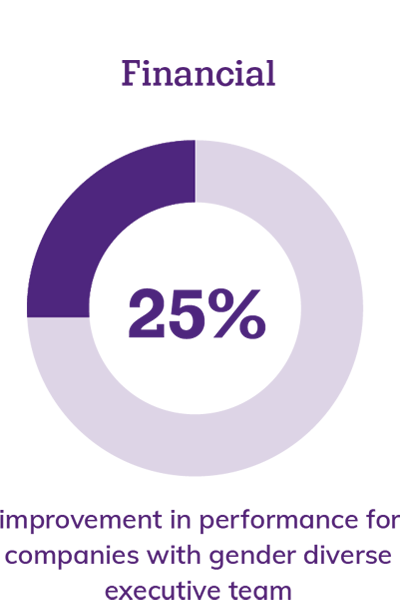
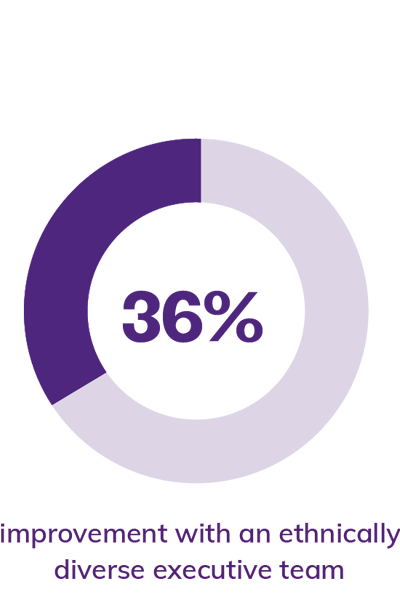
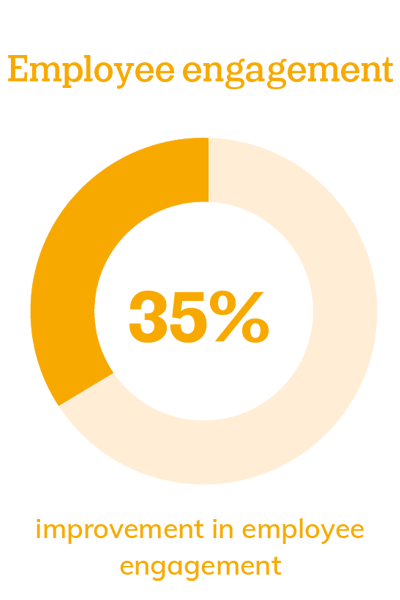
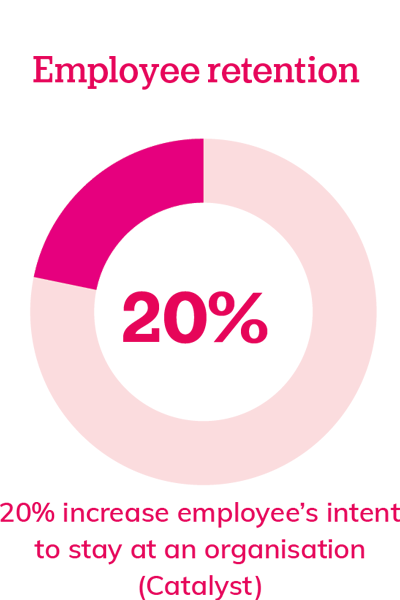
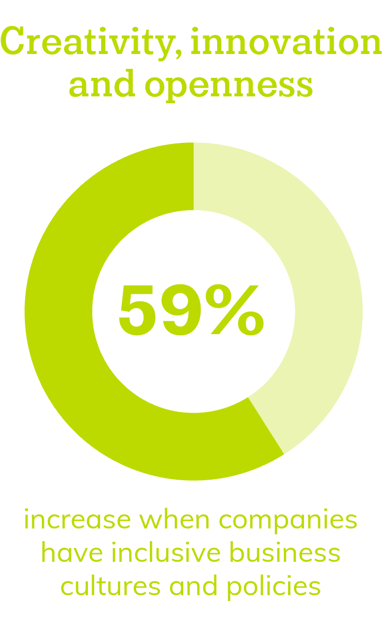
These are just some of the benefits of focusing on D&I. Companies also report better creativity (Science Direct) and faster problem-solving. A more diverse team can avoid some of the issues caused by Group Think and reap significant benefits for the business.
With so much research highlighting significant benefits for businesses and increasing expectations from customers and employees, are companies taking advantage of these opportunities?
D&I has been recognised as being a key priority for companies for some time. In our research, 92% of HR/TA/D&I teams surveyed said diversity and inclusion was a focus in their company.
When asked about the level of operation, respondents categorised their business as follows:

In October 2020 Glassdoor launched Diversity and Inclusion ratings for businesses, raising the visibility of this aspect for job seekers. This is now an essential component in talent attraction, with 72% of UK job seekers and employees reporting that a diverse workforce is an important factor when evaluating companies and job offers.
However, there is work to do to ensure employees feel included throughout an organisation. A 2022 study from the International Labor Organization found that the feeling of workplace inclusion was more likely to be associated with seniority than personal background or characteristics such as age, gender, or ethnicity/race/religion. Ninety-two per cent of senior staff said they felt included, and that diversity was respected and valued at work, compared to 76 percent of lower-level respondents.
Progress continues to be made, and this can be seen in the changing makeup of FTSE company boards. However, progress is inconsistent between companies and even where targets have been reached, there is still much to do.
The 2022 FTSE Women’s Leader Review (the successor to the Hampton Alexander Review) reports that women’s representation on FTSE 350 boards now stands at 40.2%, an all-time high.

Almost half of all FTSE 350 Boards now have a woman in either the Chair or Senior Independent Director role. However, 125 FTSE 350 companies are still below the 33% by 2020 target for women in leadership positions. There is still one all-male executive committee in the FTSE 100.
The Parker Review of FTSE 350 companies found that 96 of the FTSE 100 had at least one minority ethnic director on their boards, up from 89 last year. Of these 96 companies, 49 had more than one minority ethnic director. In the FTSE 250, 67% of companies are meeting the target of one minority ethnic director, up from 55% in 2021.
Across the protected characteristics covered by the 2010 Equality Act (age, disability, gender reassignment, marriage or civil partnerships, pregnancy and maternity, religion or beliefs, and sexual orientation), even accessing data is problematic. According to data from the Financial Reporting Council, only one or two of the FTSE 100 companies are reporting on these figures – something which highlights the need for diversity to be considered in its widest context.
When we look beyond the progress at a senior level, there is still much to be done. The gender pay gap shows a mean gap of 5.5% across the UK, which jumps to 9.7% in the median. The disability pay gap stands at 13.8% on the median, while the ethnicity pay gap is even wider, with the mean gap at 26.4% and the median at 28.8%. A YouGov survey of over 4000 UK workers also found evidence of a 16% pay gap for LBGTQ+ employees.
While the official data is patchy, employee experience surveys show that the lived experience in the workplace poses huge challenges in creating genuinely inclusive work environments.
More than a fifth of LGBTQ respondents said they had experienced verbal abuse in the office, 61% of LGBTQ workers admitted they had been made to feel uncomfortable at work, and 35% of the LGBTQ community have witnessed homophobic behaviour at work. More than a quarter (28%) cited fear of judgement by their colleagues as a key reason for not being out, with 14% feeling that their chances of promotion would be hindered if they were to come out.
The McGregor-Smith Review found that 35% of Pakistani, 33% of Indian and 29% of Black Caribbean employees report feeling that they have been overlooked for promotion because of their ethnicity.
A Trade Union Congress report into the experience of black and minority ethnic (BME) people in the workplace found that 27% of BME people told the TUC they experienced racist jokes or “banter” at work in the last five years. 26% of BME workers said they were made uncomfortable at work due to people using stereotypes or commenting on their appearance. 21% said they had racist remarks directed at them or made in their presence. The study found that most BME workers subjected to harassment do not tell their employers, with 44% worried it wouldn’t be taken seriously and 25% worried about the impact on their working relationships.
The Pew Research Center reports that as recently as 2017 four in ten women report experiencing gender discrimination at work.
One gender issue that has risen in prominence in recent months is the impact of menopause. A House of Commons report into menopause in the workplace found that the overlooked impact of menopause is causing the UK economy to 'haemorrhage talent'. A survey by Unison found that 45% of women experiencing menopause find the symptoms hard to deal with, and a 2018 study found 20% considered leaving because they found it difficult to deal with the symptoms in the workplace. A TUC report found 56% said menopause had been treated as a joke in the workplace.
Women of menopausal age are the fastest growing group in the workforce and are staying in work for longer than ever before. Yet these experienced and skilled role models often receive little support with menopause symptoms. As a result, some cut back their hours or responsibilities. Others leave work altogether.
Menopause and the Workplace, House of Commons Report, July 2022
With these figures demonstrating a clear need to keep addressing D&I issues, what are the main challenges holding companies back?
As the lack of reporting demonstrates, companies are still struggling to ensure their diversity focus covers all groups who face discrimination and exclusion. Companies need to ensure that their D&I policies remain current so that progress can be measured and newly-identifying groups can be included.
Our research showed that companies recognised the impact of bias in the recruitment process, with 92% of companies employing various methods and training to mitigate against bias. The most common form was ‘Unconscious Bias’ training, with 40% of respondents stating they currently use this or are training managers.
Other methods included:
Intersectionality defines how different aspects of a person's social and political identities combine and impact discrimination and inclusion. Although this term has been used for 30 years, it has recently gained more visibility. Companies need to ensure that their D&I focus can address the potential increased exclusion faced by employees who belong to two or more underrepresented categories.
For businesses to improve their diversity and inclusion, employees must be able to report discrimination, harassment, exclusion or other problems safely.
However, data from HBR shows that approximately 50% of discrimination and harassment complaints lead to some type of retaliation and experience worse mental or physical health than those who were harassed but did not raise the issue.
This needs to be a focus so employees can raise issues, allowing companies to understand and address them.
Diversity in leadership is vital to success. In a 2022 report from the Institute of Directors (IOD), 64% of members agreed that a diverse board is a strong driver of an effective business. Visibility of diversity at the highest levels is also a motivating factor, providing role models who demonstrate what can be achieved.
There are many aspects to diversity and inclusion, so it’s essential to ensure that any initiatives are focused and address your business's main challenges. Here are our top recommendations for improving D&I in your organisation:
Our research showed that in 56% of companies D&I is owned by the HR/TA team. 24% of respondents said that the Senior Leadership Team or other senior director owned this activity, and only 20% had a dedicated D&I Director or team.
Given the impact of D&I not only on employees but also on the financial health and customer brand perception of the business, the CEO and board members must have visibility. This will enable support at the highest level to drive changes across the business, influence company culture and set targets for the future.
While much of the focus is often on ethnic and gender diversity, it’s clear from the figures that many companies are neglecting broader diversity targets. From disability, sexual preference and gender identity to intersectionality and diversity of background, there are many aspects of D&I that companies should be addressing.
While setting KPIs is essential in measuring success, the numbers are a means to an end. To unlock the many benefits of strong D&I, companies must look beyond the statistics to ensure inclusion and diversity of thought throughout the business.
It’s crucial to understand how well your business is performing to make improvements. While it’s essential to have access to the correct data, knowing the figures alone is not enough – businesses also need to understand the causes which underlie any lack of diversity within the business.
Independent research helps provide more detailed insights that set your D&I data within the broader context of market, competitor and talent pool information to help you understand and reach the right talent.
Sharing data on diversity and inclusion is critical to building trust across your team. This transparency demonstrates how seriously the organisation takes diversity and inclusion and creates an opportunity to update employees on the programme.
While D&I activity often focuses on the recruitment stage, before hiring takes place, it’s essential to look at inclusion in both the culture of the business and throughout the working environment.
Training all employees in diversity awareness can help improve inclusion, but leaders must also be aware of the impact of decisions and who is involved in making them.
As technology advances, there are a range of tools that can help businesses to improve diversity during recruitment, from analysing unconscious bias in the language of a job advert to helping to remove unconscious bias when shortlisting.
Our research with TA/HR/D&I teams in a wide range of industries showed that:
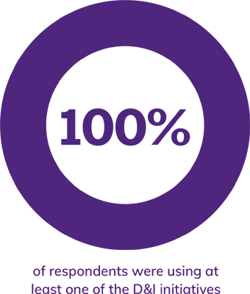
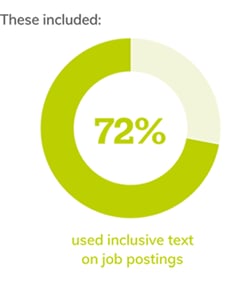
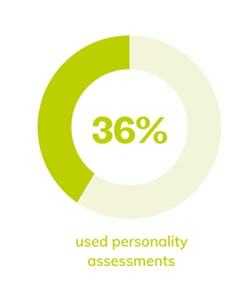
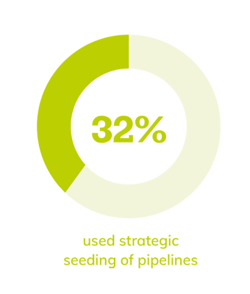
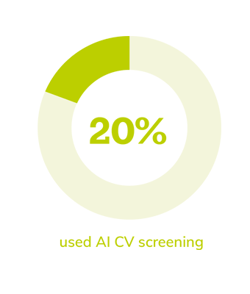
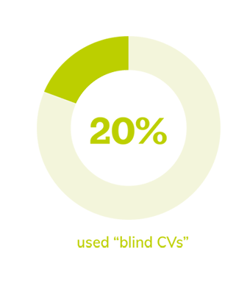
Other options include using scored assessments and structured scoring in interviews to help remove bias from the process. Making the most of the tools and initiatives can help improve your organisation's diversity.
Many aspects of the hiring process, from where you advertise vacancies to employee referral programmes, can impact the diversity of your candidates and, therefore, your employees. By seeking candidates from outside your usual recruitment sources, you can improve D&I.
There are many ways to do this, including using a talent mapping service. Our approach allows us to locate candidates who may not be reached through traditional methods, ensuring you can target the best diverse talent available. We also provide insights to help you understand the marketplace, your competitors and the perceptions of your company to help drive your D&I strategy for the future.
We hope you found this information useful. We also have a PDF version if you'd like to read it offline or share it with a colleague.
From role banding to complete transparency, openness around compensation puts all colleagues on equal footing when negotiating pay. In 2017, it became mandatory for large organisations to report on their gender pay gap. More recently, the UK government has begun considering whether ethnicity pay reporting should also be mandatory. Salary transparency can help organisations remove any discrepancies that may occur.
Ensure your workplace is a welcoming environment for colleagues of all abilities by conducting an accessibility review. Consider both physical access and adjustments that could help colleagues with neurodiverse conditions to succeed, including reducing bright light and implementing quiet areas.
A simple way to make colleagues of all genders feel seen and respected is to add preferred pronouns to email signatures and team bios. It’s also worth introducing more inclusive introductory remarks, using ‘all’ or ‘folks’ in place of ‘guys’ or ‘ladies and gentlemen’. For more information on this, see the Oxfam Inclusive Language Guide.
Clear and transparent communication benefits us all, and it is especially welcomed by those with neurodiverse conditions who can struggle with non-literal communication.
Training to build employee understanding of hidden disabilities, unconscious bias and microaggressions can build understanding and awareness across the business. Specific content for people managers can help develop an understanding of the various issues that may arise and how to respond.
Flexible hours, condensed hours and hybrid solutions can benefit all colleagues and be an asset in attracting talent to your business. This flexibility can be essential for those with caring responsibilities or anyone experiencing health issues requiring support during traditional working hours.
Choosing remote work shouldn’t leave employees feeling left out. Bridge the divide between remote workers and office-based colleagues by ensuring they are included in invites to team events. Also, consider how you can create events to make them feel part of the social life of the business. Virtual coffee breaks are one way we do this at TIG.
Showing support for important religious events beyond the recognised Christian calendar is a small yet meaningful way of including colleagues of all faiths in company culture. It’s also an excellent opportunity to invite your colleagues of faith to shape how the business approaches this.
Whether it’s International Women’s Day, Black History Month or Pride. Community events and awareness days allow employees to celebrate their diversity and signal that they can show up fully as themselves in the workplace.
Unpaid internships favour more privileged backgrounds where individuals have the financial backing to enable them to undertake unpaid work. Offering paid internships makes the opportunity accessible to a much broader spectrum of society and opens up future work prospects.
© Talent Insight Group 2025